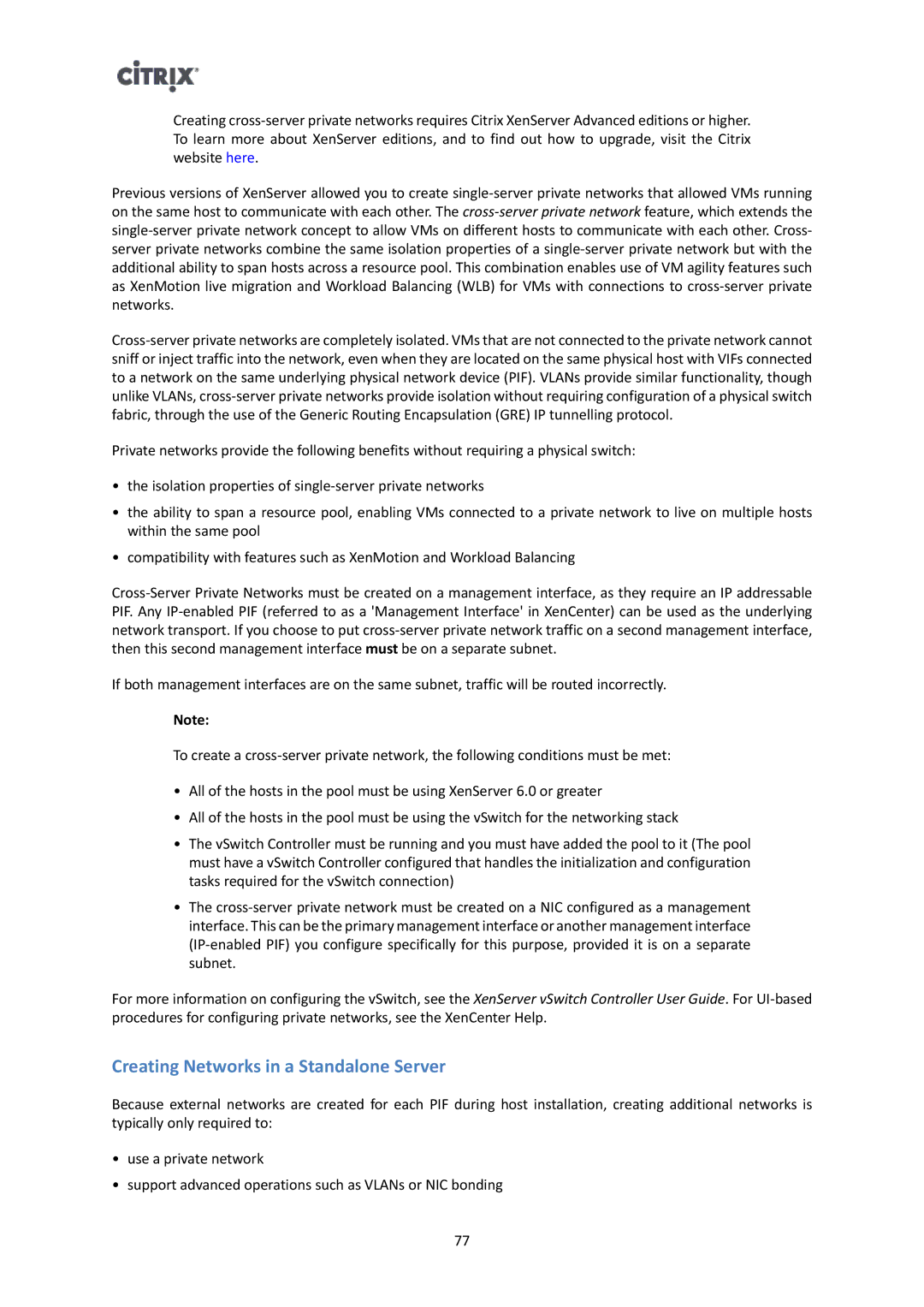Creating
Previous versions of XenServer allowed you to create
Private networks provide the following benefits without requiring a physical switch:
•the isolation properties of
•the ability to span a resource pool, enabling VMs connected to a private network to live on multiple hosts within the same pool
•compatibility with features such as XenMotion and Workload Balancing
If both management interfaces are on the same subnet, traffic will be routed incorrectly.
Note:
To create a
•All of the hosts in the pool must be using XenServer 6.0 or greater
•All of the hosts in the pool must be using the vSwitch for the networking stack
•The vSwitch Controller must be running and you must have added the pool to it (The pool must have a vSwitch Controller configured that handles the initialization and configuration tasks required for the vSwitch connection)
•The
For more information on configuring the vSwitch, see the XenServer vSwitch Controller User Guide. For
Creating Networks in a Standalone Server
Because external networks are created for each PIF during host installation, creating additional networks is typically only required to:
•use a private network
•support advanced operations such as VLANs or NIC bonding
77
